In the third of our Designer Q&A series, Effect speaks to Liam Lee, an emerging design talent from New York making unforgettably original creations out of felt.
We first encountered the neon, otherworldly shapes of Liam Lee’s work at Salon Art + Design last year, where it shone out among the panoply of design excellence at the New York fair. What makes his work so intriguing—aside from its impossible-to-ignore visual grammar—is that it immediately posits more questions than answers.
Interestingly, the young designer had a stint as a set designer—a breed of people known for their irreverent resourcefulness and inventiveness with materials. But while Lee’s work clearly succeeds on aesthetics alone, it is underpinned by a thoughtfulness and intellectual rigor that elevates it from striking art to metaphysical commentary, taking in such themes as the boundary between our interior lives and the outside environment. Here’s what he had to say:
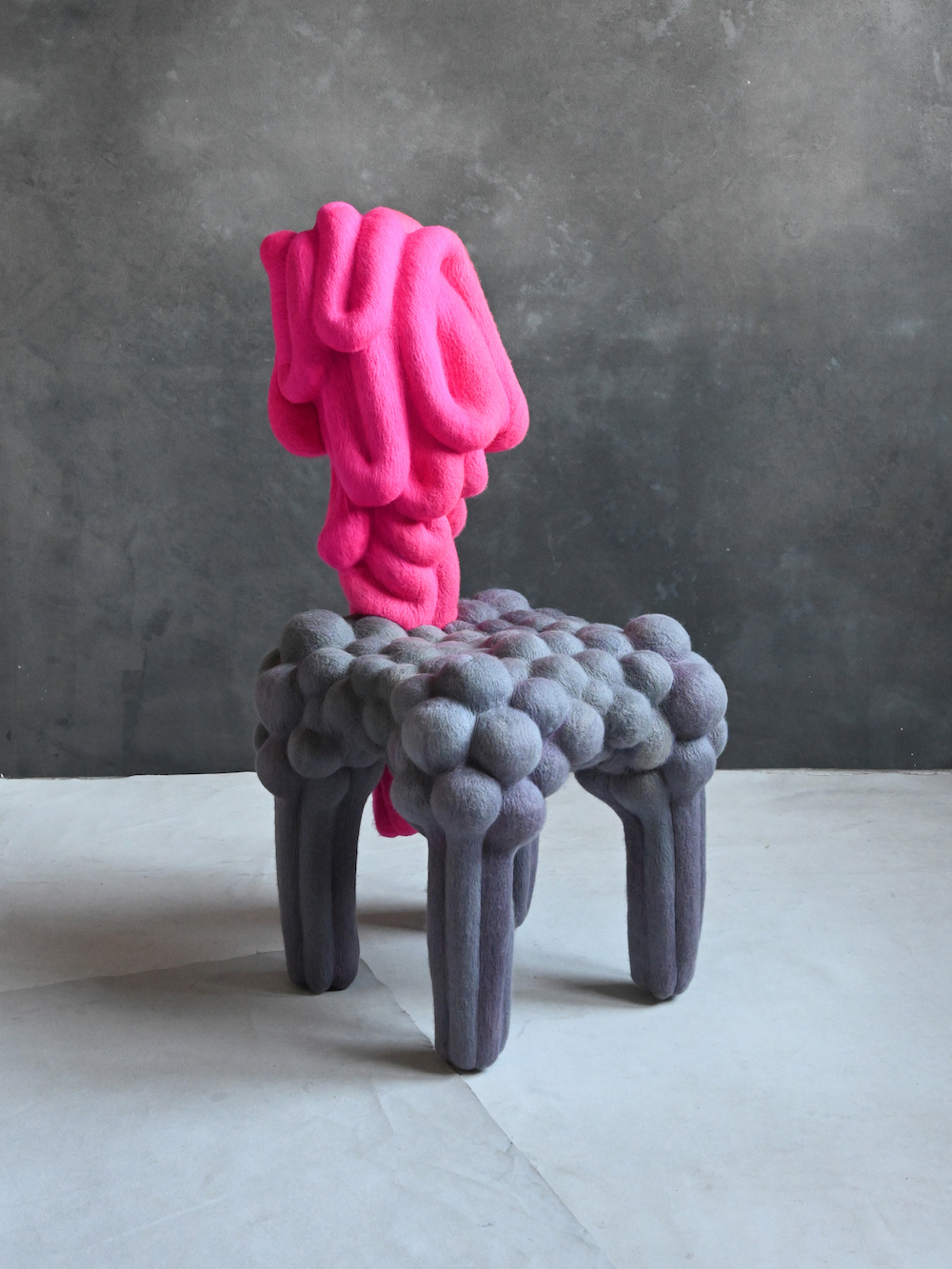

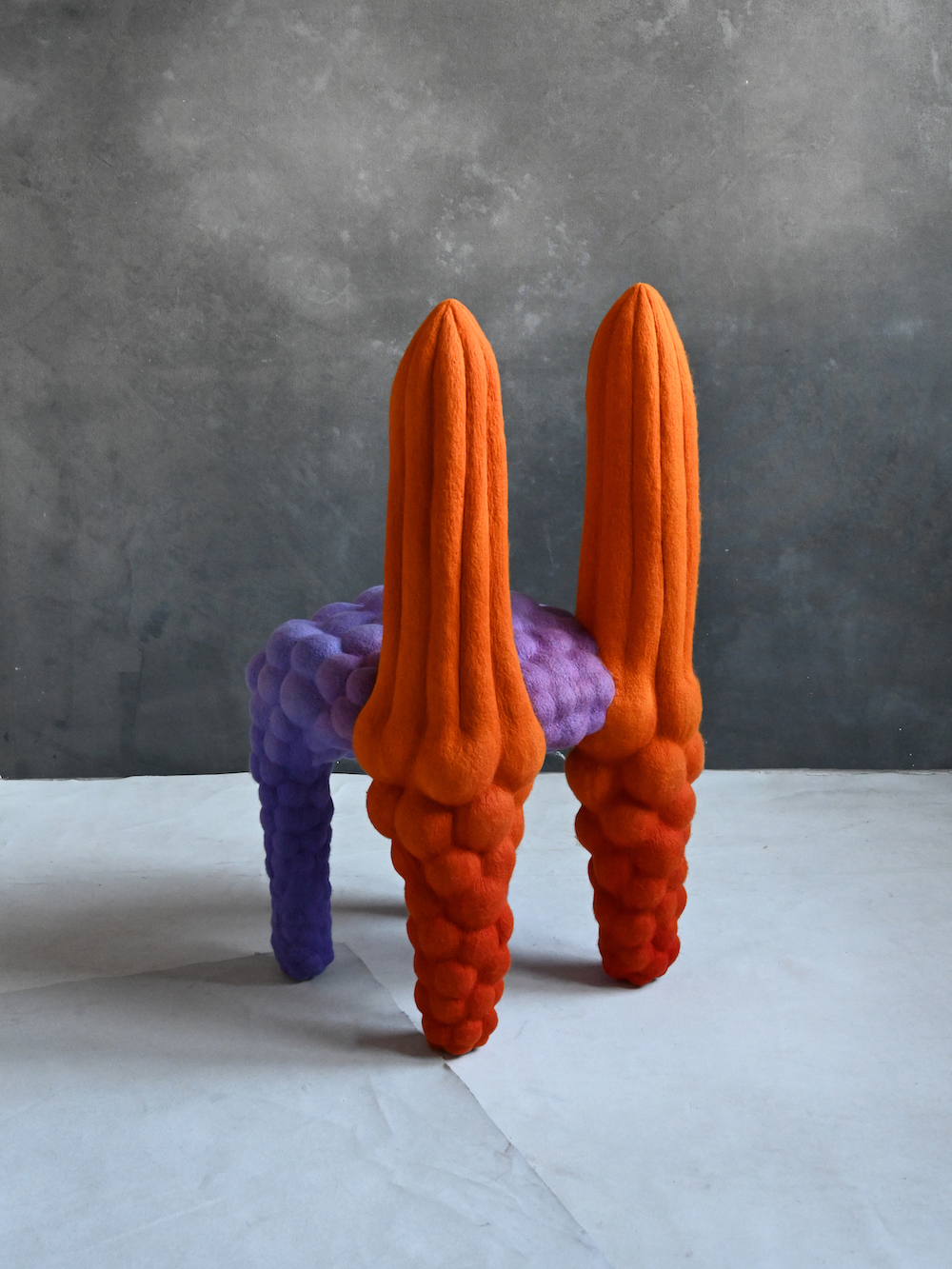
Where do you take your initial inspiration for a piece?
In a sense, my works attempt to collapse space and draw on forms from the natural world that range in scale from the microscopic to the topographic. In my textile work, I’m very loosely playing with the idea of carpets or textiles as representations of the space of the garden—which is itself a microcosm of a well-ordered universe. I’m interested in garden design as an assertion of control over nature, in the closing off and shaping a portion of wilderness over time and in so doing, rendering the world comprehensible. The hope is that the textile panels—like the space of the garden—can function as a meditative space that viewers might be able to project themselves into.
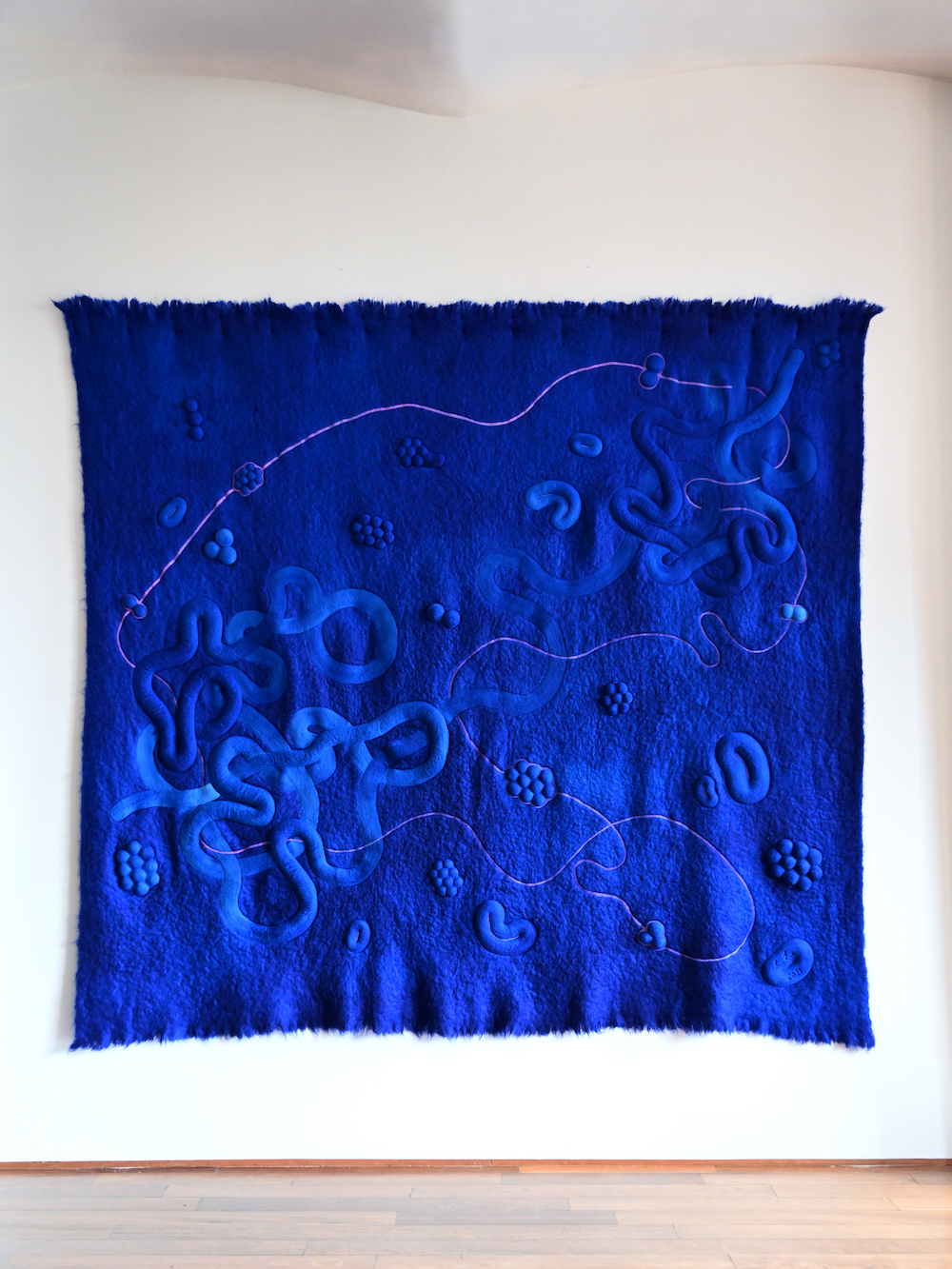
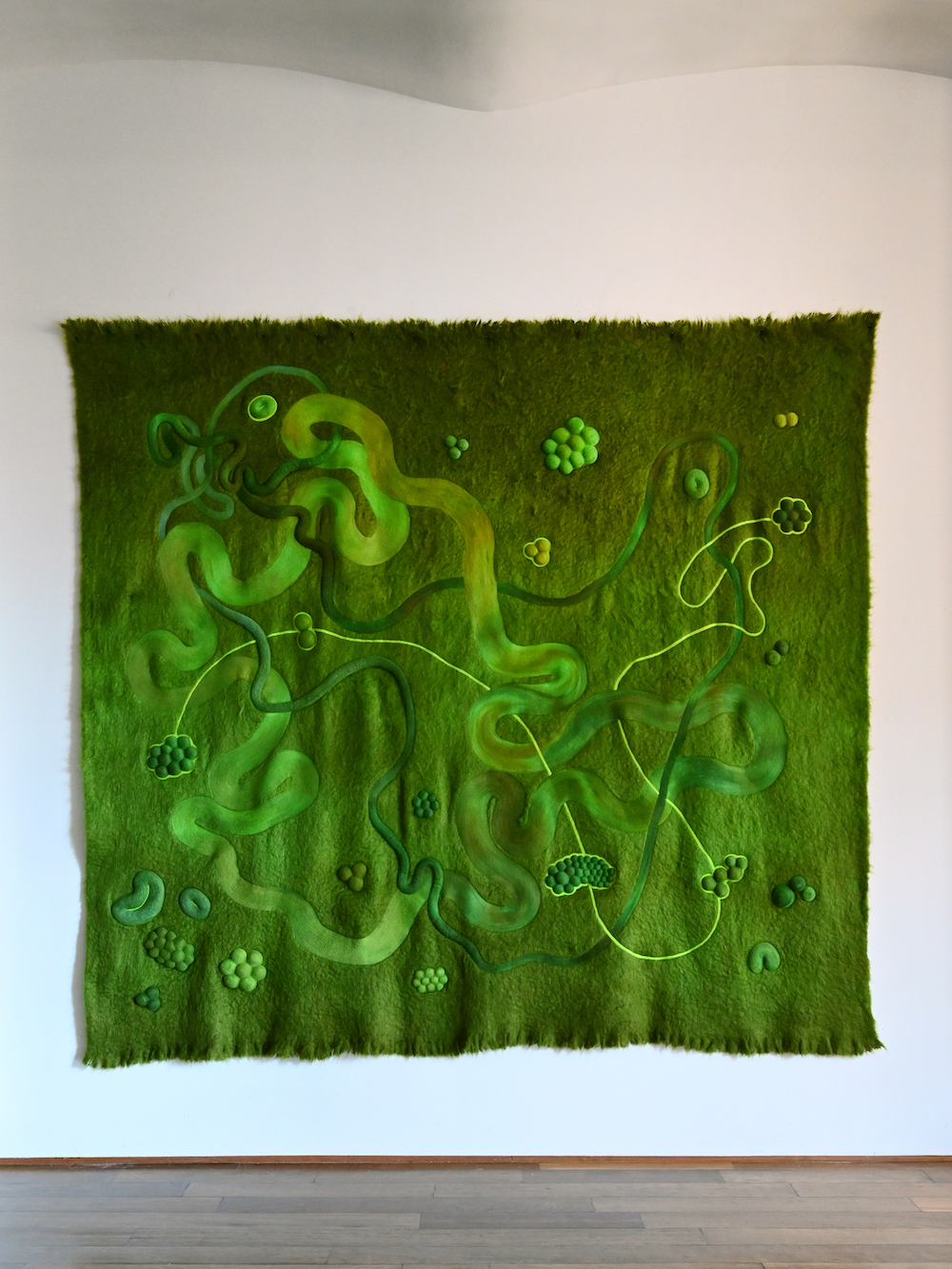
The furniture pieces usually begin with color selection, and the form emerges over time as each piece is sculpted. It’s a very slow-going and cumulative process so there are lots of minute decisions that are made along the way.
What are you working on right now?
I recently finished a handful of furniture pieces and tapestries that were just exhibited by Patrick Parrish Gallery at Fog Design + Art in San Francisco. I’m also working on a batch of textiles that will go to the Noguchi Museum shop, as well as a handful of functional ceramics that I hope to launch in the spring.
What’s your go-to material and why?
I’ve primarily been experimenting with felted merino wool fibers. I love wool felt’s capacity to change in density while remaining a continuous surface. Unlike some more traditional furniture pieces, felted sculpture doesn’t require any foam or upholstery, and it is highly malleable—it can act as both structure and surface.

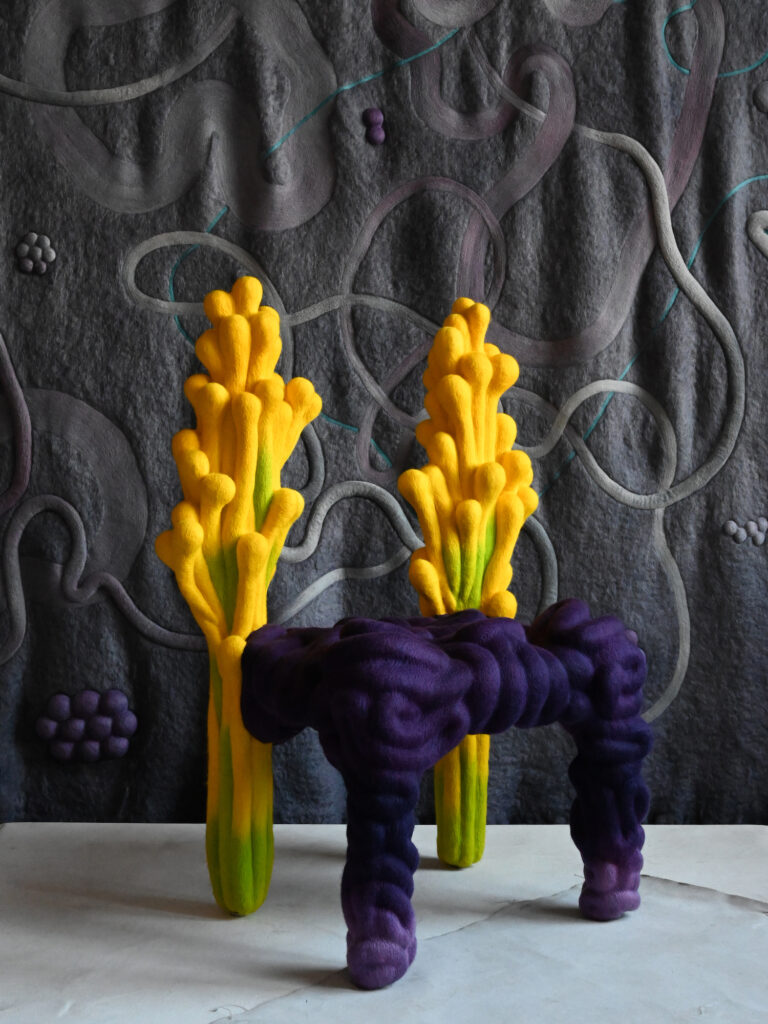
My work with wool started around 2018, somewhat out of convenience. I wanted to find a creative outlet apart from my day job at the time, and working with textiles and fiber seemed like the least messy option. I didn’t need to have a wood shop or kiln, and could work from my living room.
Is there a material you haven’t yet used that you would like to?
Glass, marble, wood and copper.
Your work is notable for its vivid use of color. How do you achieve this?
A lot of the vibrance I think comes more from the juxtaposition of and interplay between colors than from the colors themselves. A grey can become fluorescent in the right context. At this point, I have lots of scraps of wool in various colors that I’ve mixed, and I make decisions on color combinations by placing these scraps together and seeing if they work.
Your work has been described as exploring the porousness between the outside world and our interiors. Could you expand on this?
I’ve been interested in the analogical relationship between architecture and the human body, and this interest has extended to object design. One of the things I’ve been thinking about is the notion of the domestic interior as a space that is imprinted with traces of its inhabitant—that our interiority is to some extent legible in the objects and accumulated detritus within our homes.

I think this idea, when extended further, moves into a space of ontological fuzziness that I find interesting. Although we like to think of ourselves as individuated selves, we are not in fact as distinct as we might want to believe.
A lot of the vibrance comes more from the interplay between colors than from the colors themselves. A grey can become fluorescent in the right context.
Liam Lee, designer
Porous and vulnerable to external forces, susceptible to disease and to violence, we are also less apart from and more a part of those around us, and therefore are obligated to care for and be receptive to others.
This relationship between the domestic interior and the human body has been a useful and generative idea to hold onto when approaching my design work, and particularly during the pandemic, when our own homes have become simultaneously this weird space of safety and anxiety, capable of both protecting us from the outside world and of potentially opening up to pathogens or foreign bodies through its porosity.
In an attempt to acknowledge this permeability and fragility, I look at forms in nature, from microscopic organisms like bacteria and viruses, to moss covered stones, branches of trees, the human body, seed pods, landscapes, star charts, etc. and then try to bring all of these disparate elements together in the objects I make.
In this way, the domestic interior becomes a sort of dream space, and the project of living becomes an active creation of a microcosm or reflection of the outside world.
If form is 1 and functionality is 10, what number are you?
I’m not sure if form and function should be placed on opposite ends of a spectrum. I think that objects like chairs, tables, vases, etc. can work in layered ways that aren’t limited to a pure notion of use/function. A simple cup or bowl can carry with it memories for the user or induce an emotional response, doing work beyond its prescribed use.
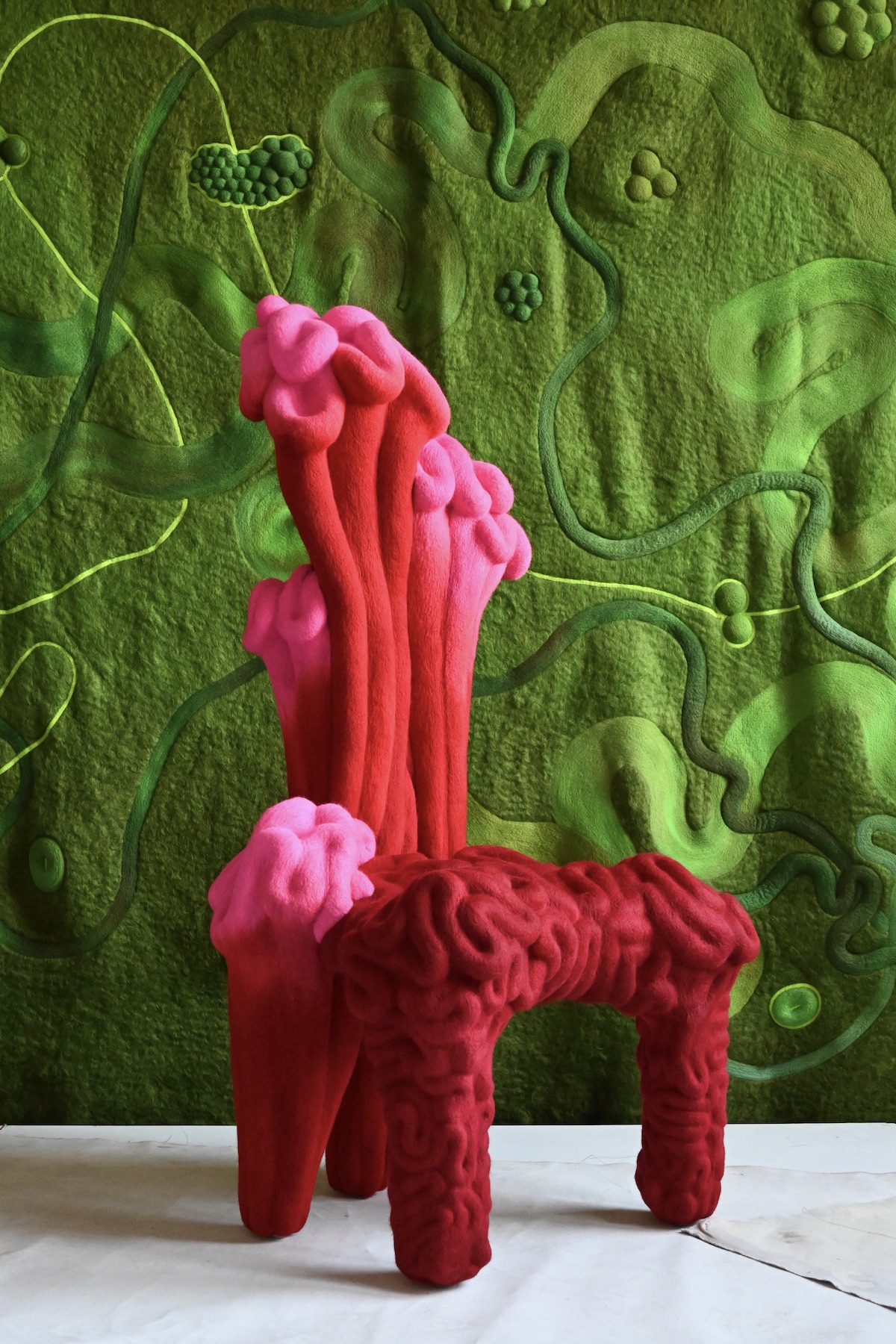

Is there another designer’s work you particularly admire, and why?
There are tons of designers whose work I admire, but in terms of my daily life, I’m particularly drawn to the work of Jens Quistgaard, who designed a lot of functional kitchen and dining objects for Dansk. I’ve been somewhat obsessively collecting and using his work for a while now and really love the simplicity and playfulness of his work.
Work on things that bring you joy and find ways to push a material in a direction that you find interesting.
Liam Lee
Pro advice: what advice, insight or tip would you pass on to your fellow designers?
I definitely don’t feel like a pro and definitely feel like I’m figuring things out as I go. I guess I would say to continue work on things that bring you joy and find ways to push a material in a direction that you find interesting.
READ:
- Meet Bjarke Ballisager, the Danish designer lighting up New York
- Meet Mac Collins, the designer reappraising the chair
Effect Magazine is brought to you by Effetto



